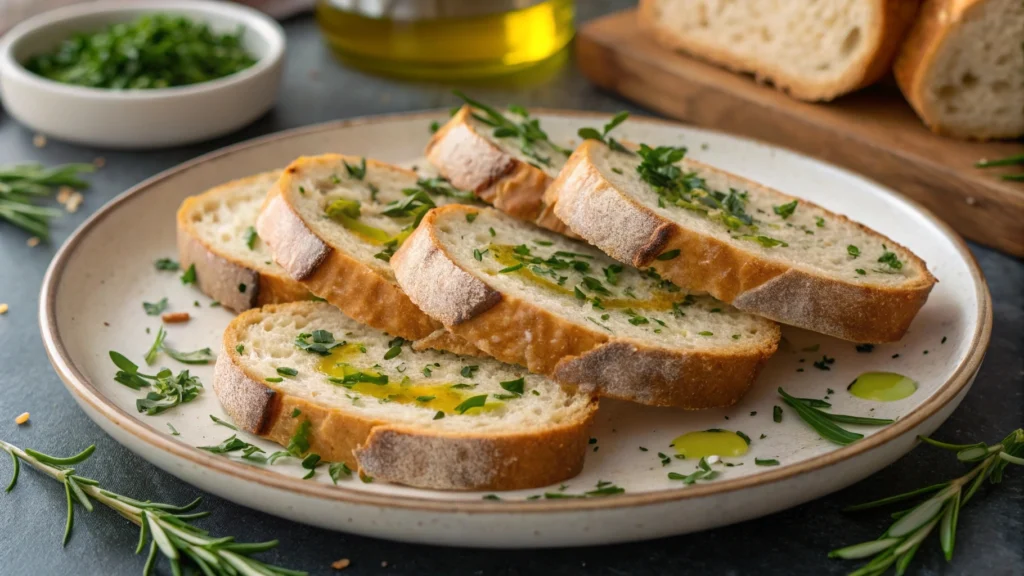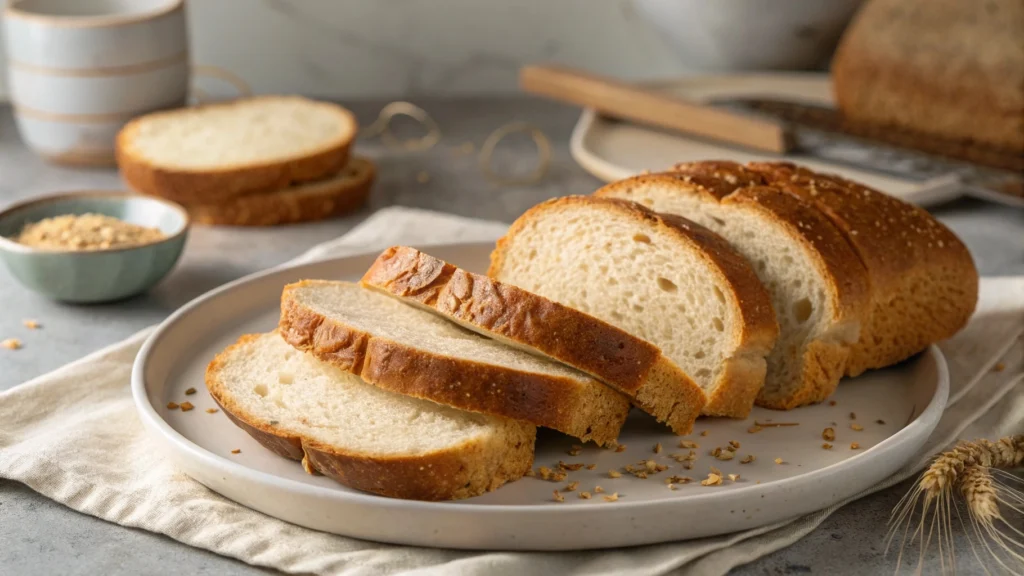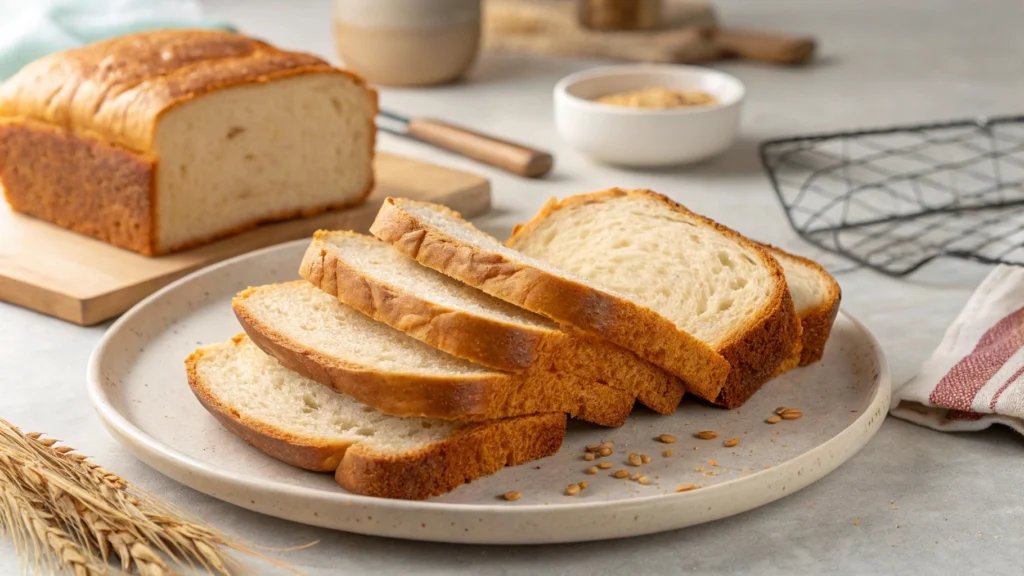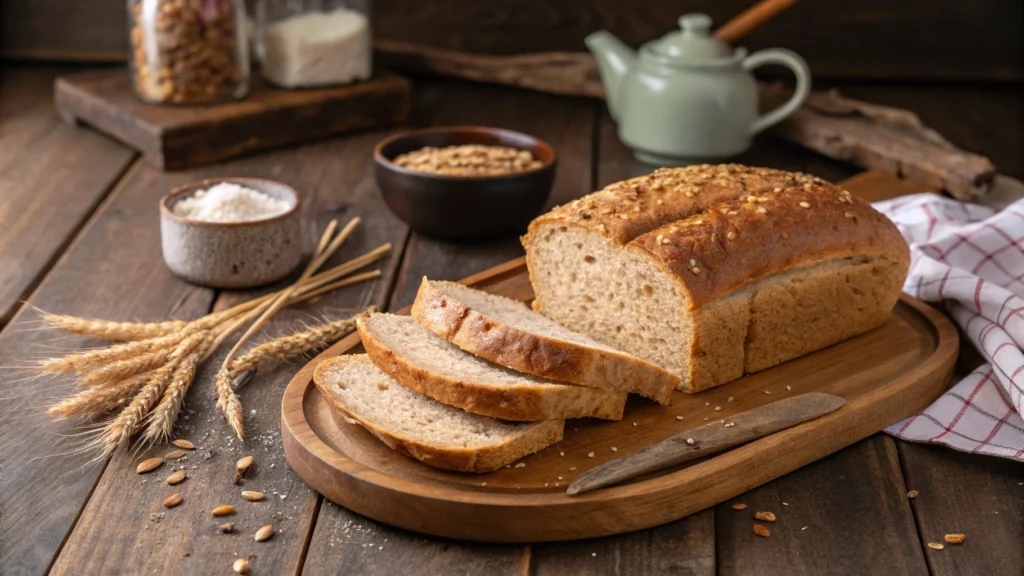Introduction:

There’s something deeply satisfying about baking your own bread at home—especially when it’s a loaf of fresh, whole wheat bread. Imagine the warm, nutty aroma filling your kitchen as you pull out a perfectly risen loaf that’s both wholesome and delicious. Whole wheat bread is an essential part of a healthy diet, offering numerous benefits, including higher fiber content, vitamins, and minerals. But why settle for store-bought when you can make it at home? In this guide, you’ll learn how to create your own whole wheat bread, from mixing the ingredients to slicing the perfect loaf. Not only will you have control over the ingredients, but you’ll also enjoy the freshest bread possible—without any preservatives or artificial additives.
Why Choose Whole Wheat Bread Over White Bread?
Key Points:
- Health Benefits: Whole wheat bread is packed with fiber, which supports digestive health, and it has a lower glycemic index compared to white bread, meaning it helps maintain stable blood sugar levels.
- Nutrient-Rich: Whole grains like whole wheat are rich in essential vitamins and minerals such as B vitamins, iron, magnesium, and antioxidants.
- Support for Digestive and Heart Health: The fiber in whole wheat bread promotes better digestion and helps reduce the risk of heart disease by lowering cholesterol levels.
- White Bread vs. Whole Wheat Bread: Whole wheat bread retains the bran and germ of the wheat kernel, which means it retains more nutrients than refined white bread. It’s higher in fiber and protein, offering a more nutritious option for your daily meals.
Key Ingredients for Perfect Whole Wheat Bread
Key Points:
- Whole Wheat Flour: This is the backbone of your bread. Unlike all-purpose flour, whole wheat flour contains the entire grain, providing fiber and nutrients that are vital for your health.
- Yeast: Yeast is what makes your bread rise. It ferments the sugars in the dough, releasing carbon dioxide and causing the dough to expand. Without yeast, your bread would be flat and dense.
- Warm Water & Honey: Warm water activates the yeast, while honey acts as a natural sweetener to balance the slightly bitter taste of whole wheat. It also helps keep the bread moist.
- Olive Oil: This adds richness and keeps your bread moist. Olive oil is a healthy fat that enhances flavor and texture.
- Optional Add-ins: For variety, you can include nuts, seeds, or oats to give your bread a unique flavor and texture. These also add extra nutritional value.

Step-by-Step Instructions for Baking Whole Wheat Bread
Key Points:
- Preparing the Dough:
- In a large bowl, mix the dry ingredients: whole wheat flour, yeast, and salt.
- Add the wet ingredients: warm water, honey, and olive oil.
- Stir until the dough begins to form.
- Kneading the Dough:
- Transfer the dough to a floured surface and knead for about 8-10 minutes.
- The dough should become smooth and elastic. This process develops the gluten, which is key to the texture of your bread.
- First Rise:
- Place the dough in a greased bowl, cover it with a damp cloth, and let it rise in a warm place for about 1 hour, or until it has doubled in size.
- Shaping the Loaf:
- Punch the dough down to release excess air, then shape it into a loaf by folding the sides in and rolling it into a tight cylinder.
- Second Rise:
- Place the shaped dough into a greased loaf pan and cover it to rise for another 30 minutes. This step is crucial for a light, fluffy loaf.
- Baking:
- Preheat your oven to 375°F (190°C). Bake the bread for about 30-35 minutes, or until the loaf sounds hollow when tapped on the bottom.
- Cooling:
- Remove the bread from the oven and let it cool completely on a wire rack before slicing. This step ensures the bread maintains its structure and doesn’t become mushy.
Common Mistakes to Avoid When Making Whole Wheat Bread
Key Points:
- Wrong Flour Type: Always use 100% whole wheat flour. Avoid using white or all-purpose flour, as this will alter the texture and health benefits of the bread.
- Overkneading or Undermixing the Dough: Kneading is essential, but overdoing it can result in tough bread. On the flip side, insufficient kneading will leave the dough too loose.
- Incorrect Proofing Times: Too short or too long a rising time can affect the texture of your bread, making it either dense or overly airy.
- Not Measuring Ingredients Accurately: The right ratios of flour, water, and yeast are critical for the bread’s success. Always use a kitchen scale for precision.
- Slicing Too Soon: Allow the bread to cool completely to avoid it becoming gummy. Cutting into it while it’s still hot can cause the loaf to collapse.

Tips for Storing and Serving Whole Wheat Bread
Key Points:
- Storage:
- Store whole wheat bread in a bread box, plastic bag, or wrapped in a clean cloth to maintain freshness.
- If you prefer, you can also wrap the bread in foil to extend its shelf life.
- Freezing:
- To freeze, slice the bread and wrap it tightly in plastic wrap, then place it in a freezer bag. This way, you can defrost slices as needed without wasting the whole loaf.
- Serving Suggestions:
- Whole wheat bread is versatile. It can be used for sandwiches, served alongside soups and salads, or toasted for breakfast.
- Pairings:
- Enhance your bread with spreads like avocado, almond butter, honey, or hummus. Pair it with a healthy salad, or use it as a base for an open-faced sandwich.

Conclusion
In conclusion, making your own whole wheat bread at home is a rewarding experience that’s both enjoyable and beneficial for your health. With just a few simple ingredients and some patience, you can bake a delicious loaf that’s free from preservatives and full of nutrients. Whether you’re new to baking or an experienced cook, following the steps in this guide will help you create the perfect whole wheat bread every time. So, why not give it a try? Grab your ingredients, preheat your oven, and get baking today!
FAQ Section
1. Can I use all-purpose flour instead of whole wheat flour for this recipe?
No, using all-purpose flour will change the texture and nutritional value of your bread. Whole wheat flour is key to the recipe’s taste and health benefits.
2. How do I know when my whole wheat bread is done baking?
Tap the bottom of the loaf—if it sounds hollow, it’s done. You can also use a thermometer to check; the internal temperature should reach around 190°F (88°C).
3. Can I make this recipe without yeast?
Yeast is crucial for the bread to rise and develop a soft, airy texture. Without it, the bread will be flat and dense.
4. How do I store leftover whole wheat bread?
Store it in a bread box, plastic bag, or wrapped in a cloth to maintain freshness. For longer storage, you can freeze the bread.
5. What are some variations I can make to this recipe?
You can add seeds, nuts, or oats to the dough for added texture and nutrition. You can also experiment with different sweeteners, like maple syrup or agave nectar, instead of honey.
